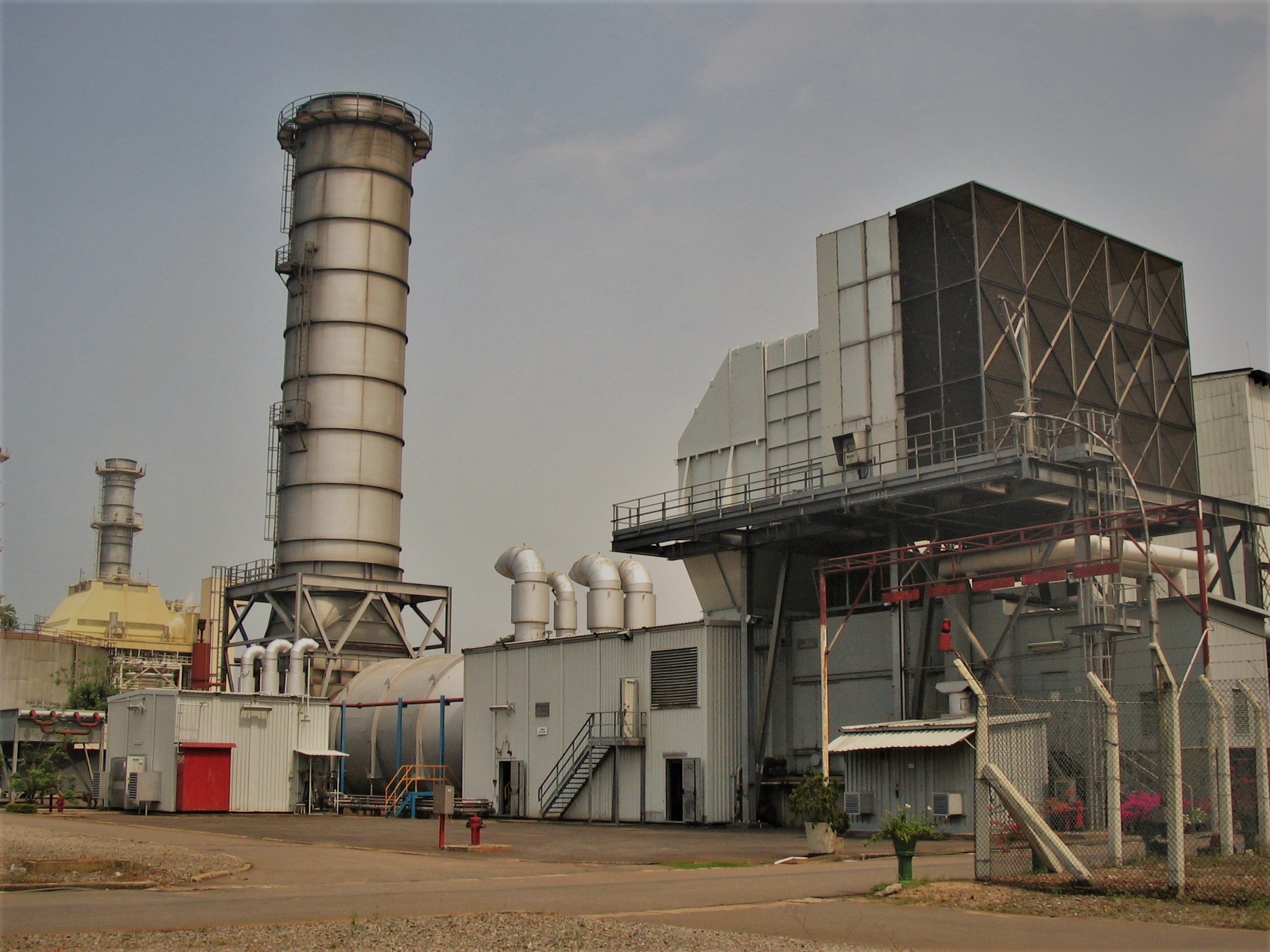
Kelanitissa Power Station is the first ever thermal power station in Sri Lanka which started its operations in 1964 with two steam turbines of 25MW capacity each running on furnace oil. These steam turbines were retired from service after 38 years of operation in year 2002. In year 1980 and 1981 respectively, six gas turbines were installed in Kelanitissa in two Project phases namely Phase-I and Phase-II with the following configuration.
 |
 |
|---|---|
Figure 1 Generator side of Ph-I GT |
Figure 2 Intake Air Filter house |
 |
 |
|---|---|
Figure 3 Generator side of Ph-II GT |
Figure 4 Intake Air Filter house |
Later in year 1997, the largest single power generation unit of CEB (at that time) was installed in Kelanitissa premises with a capacity of 115MW. This is known as GT-7 (or Fiat GT) and it was manufactured in Italy, by FIAT-Avio Company. This Gas Turbine was constructed within a very short period of one year to meet the increasing power demand during a period of a drought at that period.

Figure 5 Side view off Fiat-Avio (GT7) Gas Turbine
Kelanitissa Power Station is having the highest unit generation cost in CEB; therefore GT-7 and Fr-V GTs are in the 2nd last and last positions respectively in the merit-order list of SCC. Typical fuel rates (l / kWh) for the two types of GTs & for the current price of LAD (@ Rs.104 per liter) the generation costs are as follows,
| Machine | Fuel Rate(l / kWh) | Generation Cost (Rs. / kWh) |
|---|---|---|
| GT-7 | 0.33 | 40.00 |
| Fr-V GT | 0.50 | 60.50 |
Table Typical Fuel rates and Generation Costs of KPS GTs
The tank farm which is used to store fuel for the operation of Gas Turbines consists of four Diesel storage tanks and two Naphtha Tanks (for the use of KCCPS). Diesel tanks identified as Tank 3, 4, 5 & 6 each has a capacity of 12,000 m3 or 12 million liters. Tanks 3 & 4 are connected with CPC fuel lines to pump and store untreated LAD which contains water, mud or any other foreign particles. The Fuel Oil Treatment Plants (Old & New) contains separators which subjects the untreated fuel oil to a centrifugal process and separates the unnecessary material and pumped to treated oil tanks (5 & 6). These two tanks are connected to the machine header line which feeds all Fr-V GTs, GT-7 and KCCP GT.
Apart from the Power Generating units and fuel tank system, Kelanitissa has an outdoor switchyard consisting of 33kV and 132kV bus bars, Inter-bus transformers and circuit breakers. The 132kV section of the switchyard has been converted into a GIS which belongs to the transmission division. Since then, only 33kV switchyard operations are handled by the SCE of KPS.
 |
 |
|---|---|
Figure 6 Control Panel of 132kV GIS |
Figure 7 Switchgear room of 132kV GIS |
The 220kV GIS is also located in the KPS premises which was built before the 132kV GIS which connects the 220kV Transmission network and 132kV network of Sri Lanka via the 220kV/132kV inter-bus transformers.
 |
|---|
Figure 8 220kV / 132kV Inter-Bus Transformer |
Each of these transformers consists of 33kV tertiary winding for the auxiliary supply of the 220kV GIS
 |
 |
|---|---|
Figure 9 Control Panel of 220kV GIS |
Figure 10 Switchgear Room of 220kV GIS |
The 132kV GIS was constructed by the transmission division under the Colombo City Electricity Distribution Development Project. It was commissioned in 2012 to improve the quality and the capacity of 132kV distribution network in Colombo City.
 |
|---|
Figure 11 KPS outdoor switchyard |
The two transmission towers in KPS switchyard connects Biyagama 220kV double circuit overhead transmission line and Kolonnawa 132kV double circuit overhead transmission lines with the two GISs.